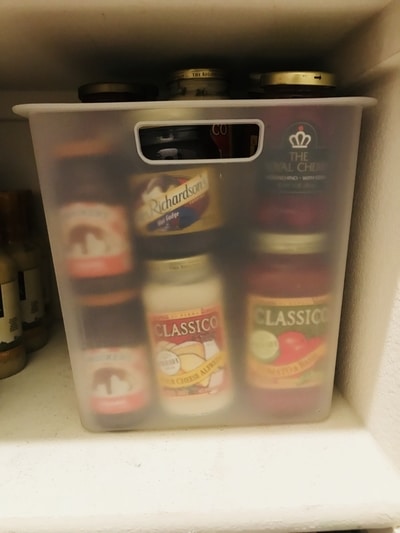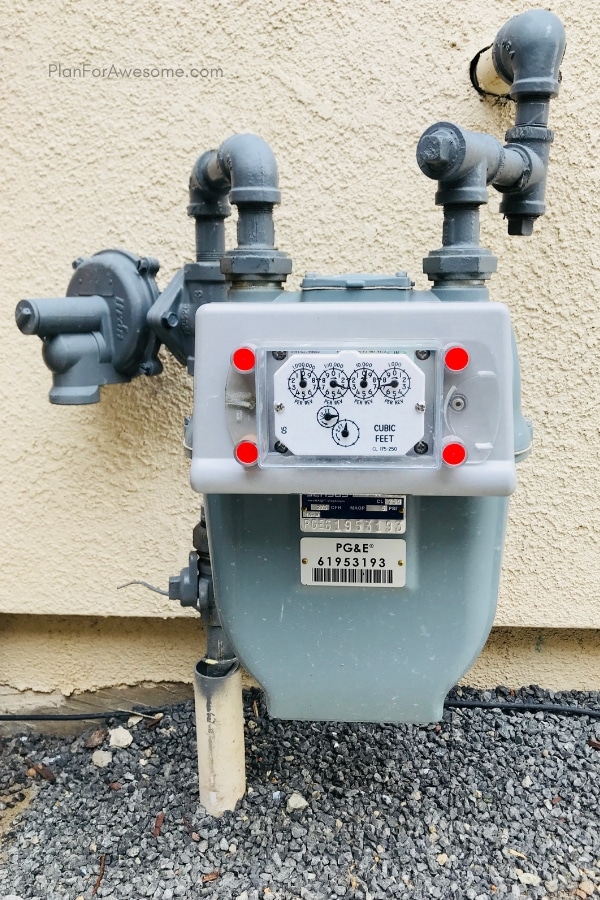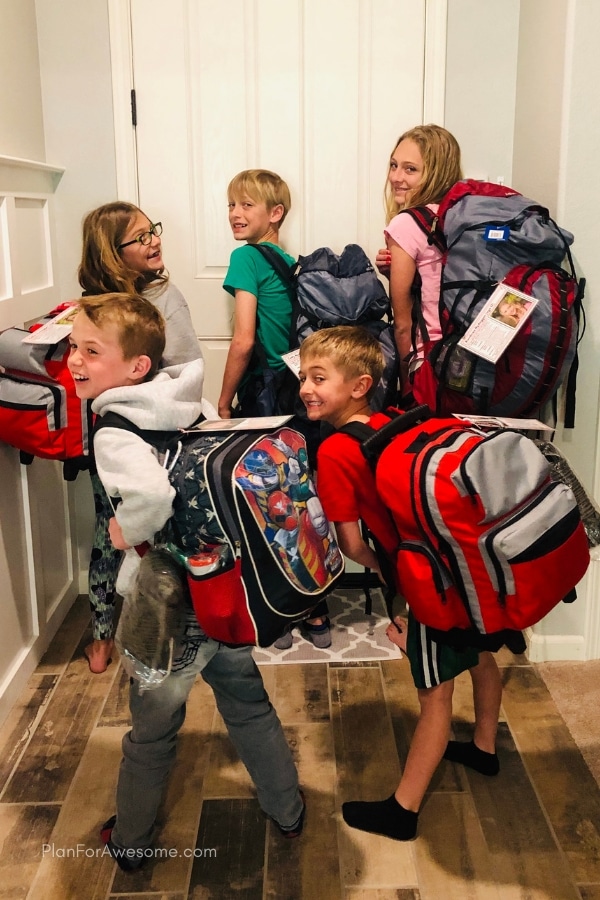
How to keep your household information organized
There are so many reasons why you need to keep your household information organized. Daily life plus emergency preparedness all in one easy to access file.

**This post contains affiliate links, which means if you click on a link and make a purchase, I may make a small commission at no extra cost to you.
Considering how to prepare for an earthquake is so important! There are things you can do to prepare your home for an earthquake, as well as to prepare your family for an earthquake.
They can happen anywhere, but the higher risk areas in the United States are California, Alaska, and the Mississippi Valley. Living in California, I am especially in tune with this possibility, and thought it would be helpful to cover this topic?
This step has a two-fold benefit. Not only will it reduce the risk of having things break and costing you a fortune in replacing broken items, but it will also reduce the risk of injury to your family. Imagine all of your picture frames in your entire house crashing down during an earthquake; it could mean lots of money and possible injuries from falling objects and broken glass.
Hanging a picture frame on one nail isn’t going to hold it in place during a massive earthquake.
There are two different methods for securing picture frames to your walls.
For a few bucks, you can purchase one of a variety of TV straps. These attach to the back of your TV and secure it to either the wall or your TV stand. Here are straps that stick on (affiliate link), and these ones screw on (affiliate link) to the back of your TV.
**Added perk: this also prevents TVs from being pulled on top of small children. Did you know that every 24 minutes tipped furniture or a falling TV sends an injured child to the emergency room? Secure them!
Refrigerators should also be secured to the wall behind them.
Can you imagine if a bookcase fell on top of your child during an earthquake? Secure them! Each piece of large furniture should be secured to two different wall studs. Depending on size and weight, here are some different options:
Okay, I am not so crazy that I plan on running out and buying latching cabinets just in case we have an earthquake. If you already have them, kudos to you. I guess I am willing to take my chances on that one.
However, it isn’t a bad idea to line your cabinets with rubberized shelf mats (affiliate link) to help prevent items from slipping in the event of an earthquake. You can get these at hardware stores as well as recreational vehicle or boating equipment supply stores.
Other options are metal edge angles on shelves or net restraints.
If you have things on display that would be dangerous as flying objects, or be a big emotional loss if they broke (such as family heirlooms), consider securing them in place with museum putty found on Amazon here (affiliate link). This is not intended for vertical use. It is meant to keep things from sliding on a horizontal surface (also used a lot by people with motorhomes to keep things in place).
If your water heater doesn’t have two straps that wrap completely around it and are screwed into the studs of a wall, then it is not properly braced. The old recommendations have been modified since the 1989 Loma Prieta (San Francisco) earthquake and the 1994 Northridge (LA) earthquake.
It is now recommended that there be a strap on the bottom and a strap along the top, rather than just one around the top or middle.
It is also recommended that you use heavy-gauge metal strapping rather than plumber’s tape (the thin metal in plumber’s tape is too brittle to be effective).
You may need to add wood blocking to your wall to provide a place for the straps to be screwed into.
Be sure to check the straps once a year. They may become loose over time.
This prevents these things from falling on top of people who might be sleeping when an earthquake happens.

This one can be hard, but the more mindful you are of it, the better off you’ll be.
For example, I put all glass jars of food (spaghetti sauce, jelly, fudge, caramel, etc) on the bottom shelf in our pantry. This gets tricky if you have a toddler…you want to make sure all glass is out of reach for a toddler, or secured behind childproofed cupboard doors.
Since we are past the toddler stage, I put our glass jars in a plastic bin (affiliate link)and put that on the bottom shelf in our pantry. This way if there were an earthquake, even if the entire bin fell off the shelf, it’s not a far fall and the bin would hopefully minimize the mess of fallen broken glass jars. It’s definitely better than putting all these glass jars on a top shelf with no bin…
**Also, an added perk: before I started doing this, every once in a while a glass jar in the pantry would get knocked over by accident. These plastic bins eliminate that!
Heavy things are another tough one. I like to utilize every square inch in our home for storage. I like using Sterilite/Rubbermaid totes to keep things organized, and there is a TON of space above the top shelf in our master closet. Which makes that a pretty perfect place to store a bunch of totes.
The problem is, the shelf isn’t as deep as my totes. So every once in a while, we would hear a HUGE CRASH come from upstairs, and Tyler and I would look at each other and roll our eyes. We knew it was one of the totes up in the master closet, falling off the shelf.
This is a HUGE safety hazard (not to mention a huge pain in the butt)! So Tyler rigged up this system for me. It isn’t pretty, and one day maybe we’ll come up with something better. But it was a quick fix that works, so I’m not complaining. Don’t judge. I wouldn’t put this out in my living room or anything. But if you are facing the same problem, I would recommend doing something like this, to make it a safer situation.
Those totes aren’t going ANYWHERE. Trust me.
If you don’t have a crazy handy and creative husband to do this for you, do all you can to move those heavy things down as low as possible.
What makes a safe place?
This is where my kids know to go if they are in our living room when an earthquake strikes. This desk is solid wood, so I’m not worried about it collapsing on top of them. To have protection on 3 sides is amazing! They just need to throw the stool out of the way and take cover!
Wiped out cell towers can drastically affect the ability to communicate. Click here to read the post all about creating your Family Emergency Plan.
Broken gas lines can create a hazard requiring immediate shut-off and/or evacuation.
It is ESSENTIAL for you to know how to shut off your gas (and water). If you’d like me to walk you through step-by-step to shutting off your gas and water, finding a utility shut-off tool that fits, along with a free printable to hang in your garage with instructions, you’ll want to check out the Quick & Easy Preparedness Challenge.

If your home is unsafe following an earthquake, you will need to evacuate. Having 72-hour kits and grab lists ready to go are sooooo important!
I have a 5-part series to help you get your 72-Hour Kits ready to go. Click here to go to Part 1 of Building Your 72-Hour Kits.
If you haven’t started making 72-hour kits for your family, here is a post outlining a 16-week schedule to building your kits!
If you’d like more help than blog posts, I cannot recommend the Plan for Awesome 72-Hour Kit Course enough! It is overflowing with budget tips, kid hacks, and helpful questions to help you personalize your kits! You can listen while you’re doing laundry, dishes, or driving carpool. It comes complete with supporting printables, making it a ONE-STOP-SHOP for building your family’s 72-hour kits.
You can purchase the course outright HERE, or you can access it for a FRACTION of the price by joining the Plan for Awesome Premium membership!

Downed power lines can result in loss of power for an extended amount of time (several days and even weeks).
This post has a comprehensive list of things to consider in the event of an extended power outage.
Broken roads and bridges can result in a major delay in food and supplies reaching your area for days, weeks, and even months, depending on the damage.
Having several weeks’ worth of food and water in your home would be an incredible resource to have if this were the case in your area.
Standard homeowner’s insurance does not cover earthquake damage. For reals. Why do we even have insurance, with all the exclusions?! Don’t get me started!
Many people are surprised to learn that earthquake damage is not included in a standard homeowner’s insurance policy. Now that you know, decide if purchasing earthquake coverage is for you. You can call your current homeowner’s insurance company for a quote. I will warn you…the coverage is hugely disappointing. But it’s something…

There are so many reasons why you need to keep your household information organized. Daily life plus emergency preparedness all in one easy to access file.

There will always be things we don’t think about before we encounter an emergency. But, I’m here to help you think about some of the non-food storage items you might want to keep on hand for the next rainy day.

Berkey water filters are THE BEST water filters, not only for emergencies, but for everyday use. They are so good, they are classified as a water purifier, which is a step up from a filter!

